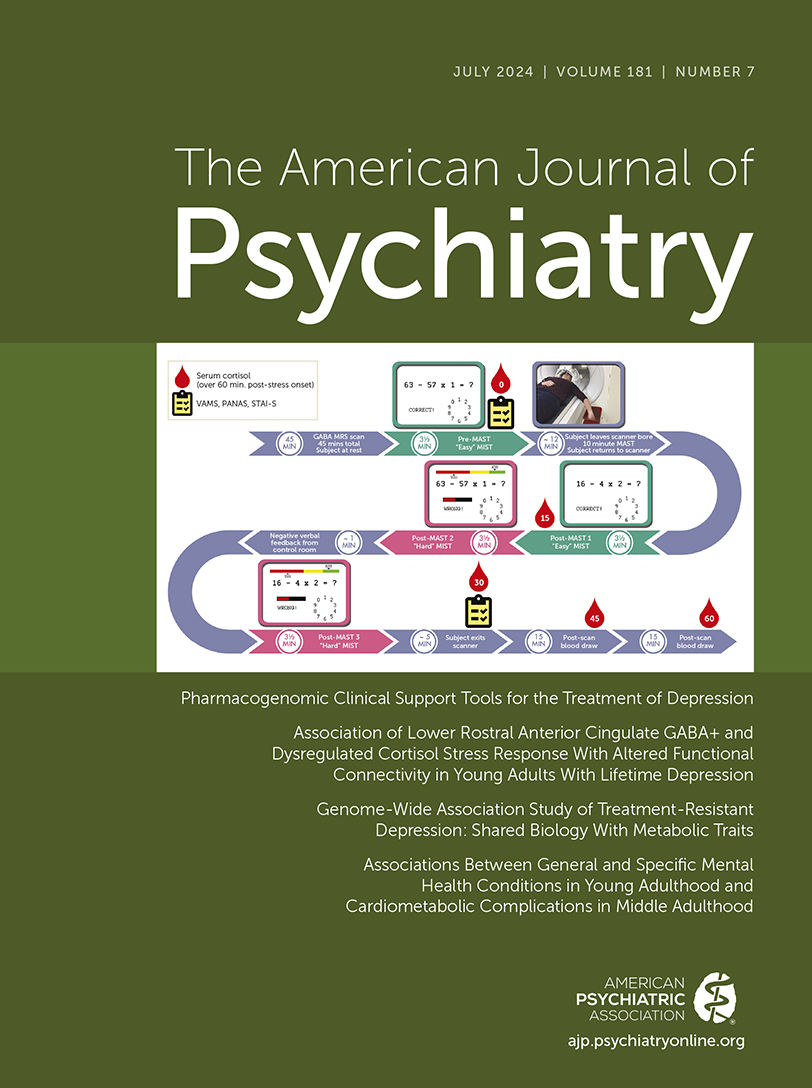Abstract
Objective:
Preclinical work suggests that excess glucocorticoids and reduced cortical γ-aminobutyric acid (GABA) may affect sex-dependent differences in brain regions implicated in stress regulation and depressive phenotypes. The authors sought to address a critical gap in knowledge, namely, how stress circuitry is functionally affected by glucocorticoids and GABA in current or remitted major depressive disorder (MDD).
Methods:
Multimodal imaging data were collected from 130 young adults (ages 18–25), of whom 44 had current MDD, 42 had remitted MDD, and 44 were healthy comparison subjects. GABA+ (γ-aminobutyric acid and macromolecules) was assessed using magnetic resonance spectroscopy, and task-related functional MRI data were collected under acute stress and analyzed using data-driven network modeling.
Results:
Across modalities, trait-related abnormalities emerged. Relative to healthy comparison subjects, both clinical groups were characterized by lower rostral anterior cingulate cortex (rACC) GABA+ and frontoparietal network amplitude but higher amplitude in salience and stress-related networks. For the remitted MDD group, differences from the healthy comparison group emerged in the context of elevated cortisol levels, whereas the MDD group had lower cortisol levels than the healthy comparison group. In the comparison group, frontoparietal and stress-related network connectivity was positively associated with cortisol level (highlighting putative top-down regulation of stress), but the opposite relationship emerged in the MDD and remitted MDD groups. Finally, rACC GABA+ was associated with stress-induced changes in connectivity between overlapping default mode and salience networks.
Conclusions:
Lifetime MDD was characterized by reduced rACC GABA+ as well as dysregulated cortisol-related interactions between top-down control (frontoparietal) and threat (task-related) networks. These findings warrant further investigation of the role of GABA in the vulnerability to and treatment of MDD.
Access content
To read the fulltext, please use one of the options below to sign in or purchase access.- Personal login
- Institutional Login
- Sign in via OpenAthens
- Register for access
-
Please login/register if you wish to pair your device and check access availability.
Not a subscriber?
PsychiatryOnline subscription options offer access to the DSM-5 library, books, journals, CME, and patient resources. This all-in-one virtual library provides psychiatrists and mental health professionals with key resources for diagnosis, treatment, research, and professional development.
Need more help? PsychiatryOnline Customer Service may be reached by emailing [email protected] or by calling 800-368-5777 (in the U.S.) or 703-907-7322 (outside the U.S.).



